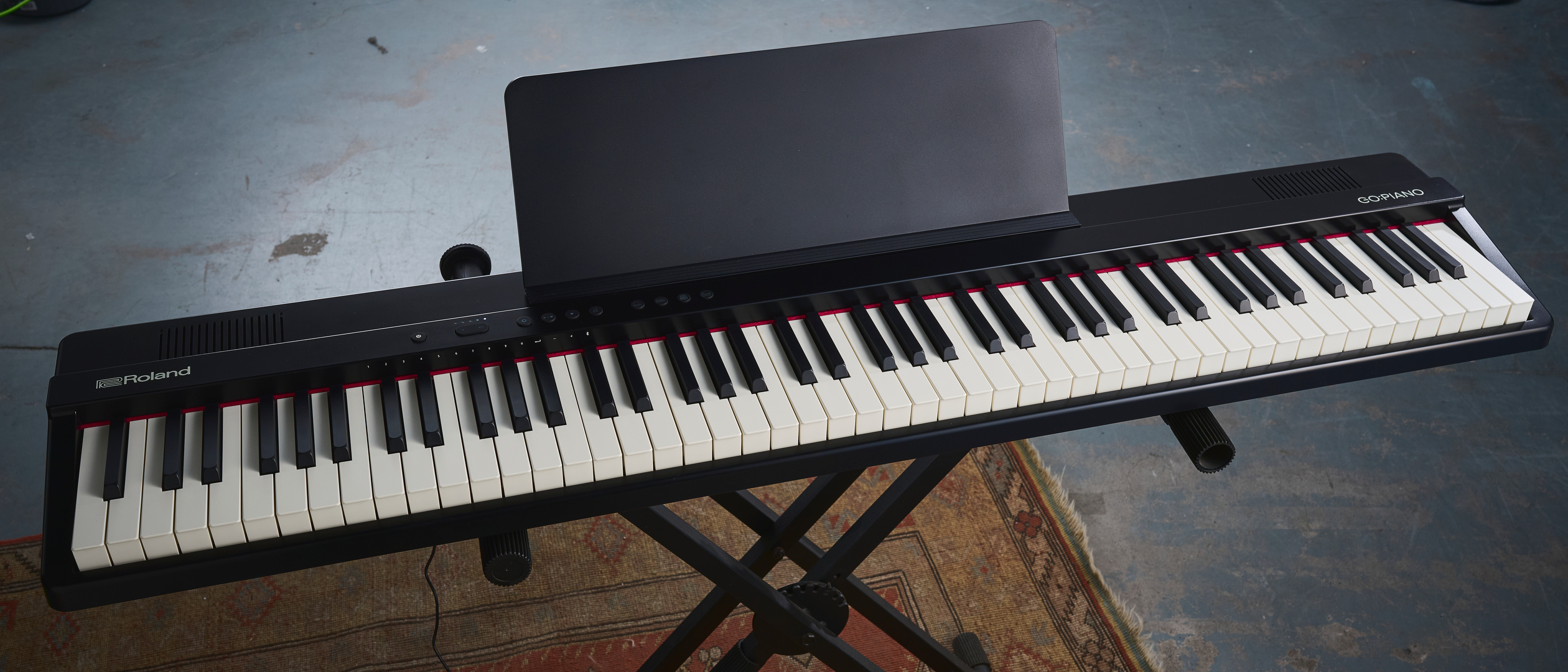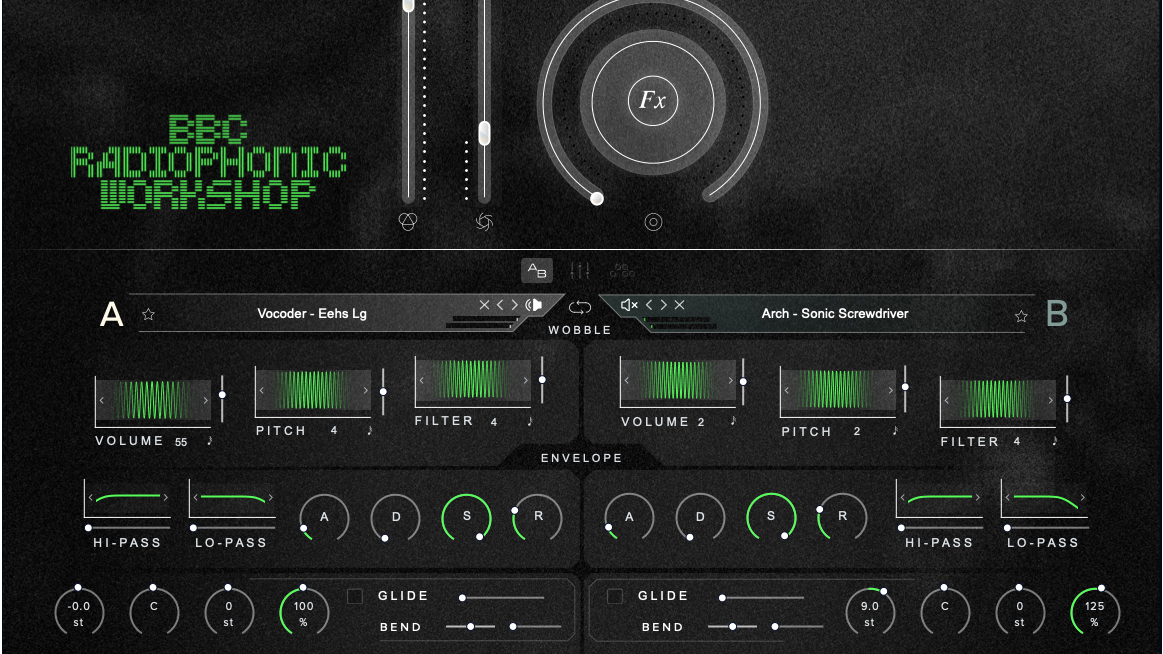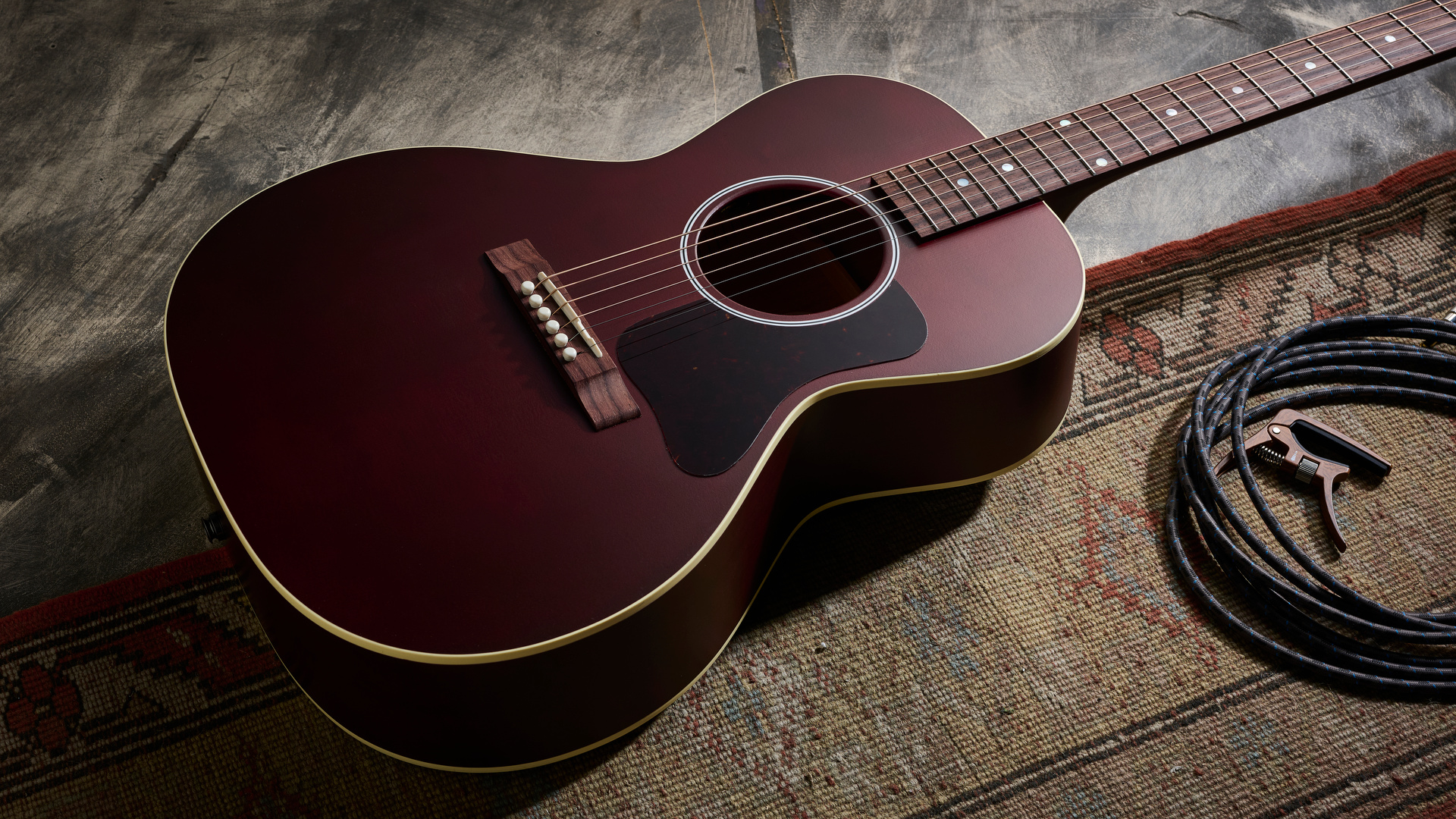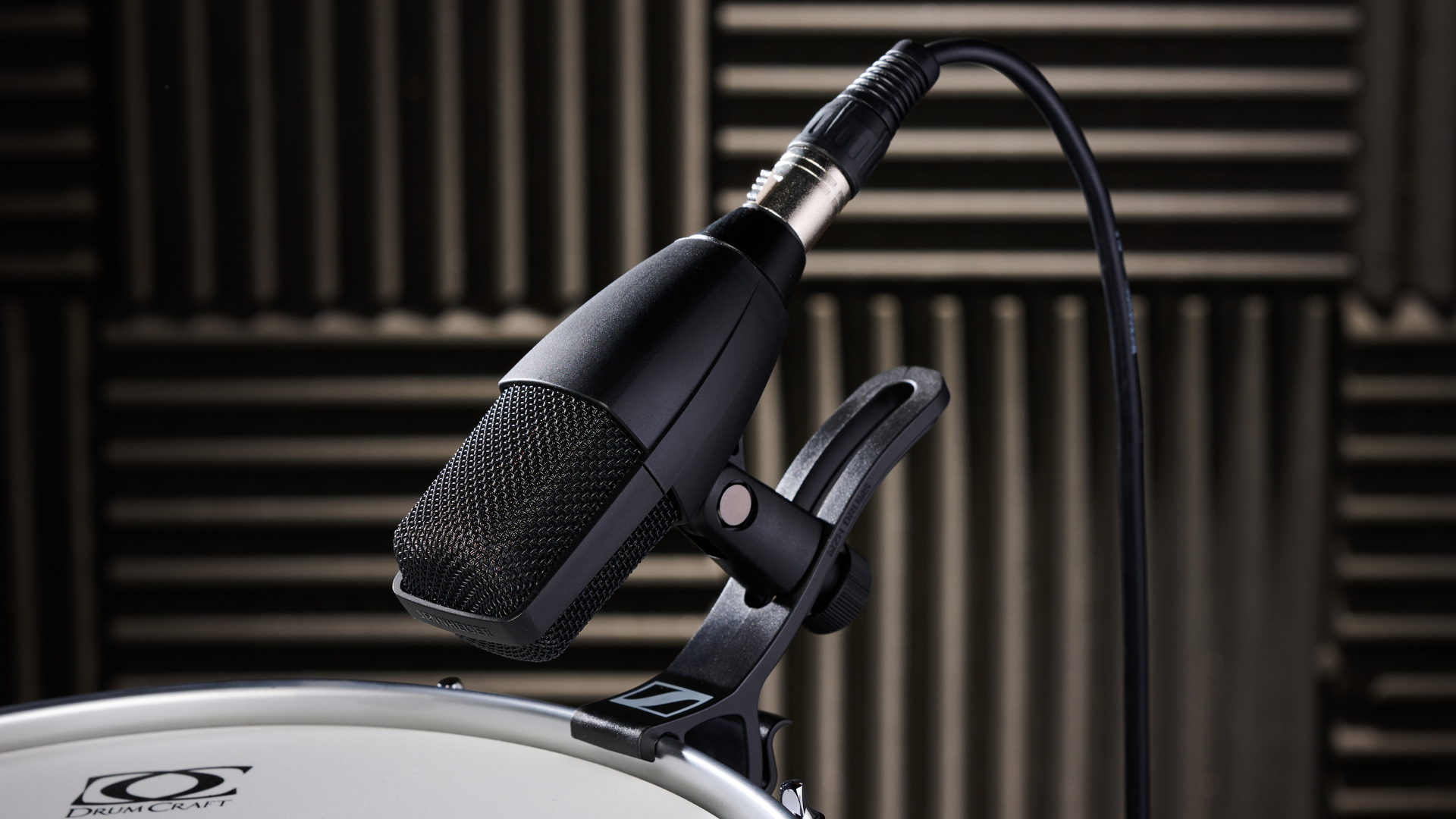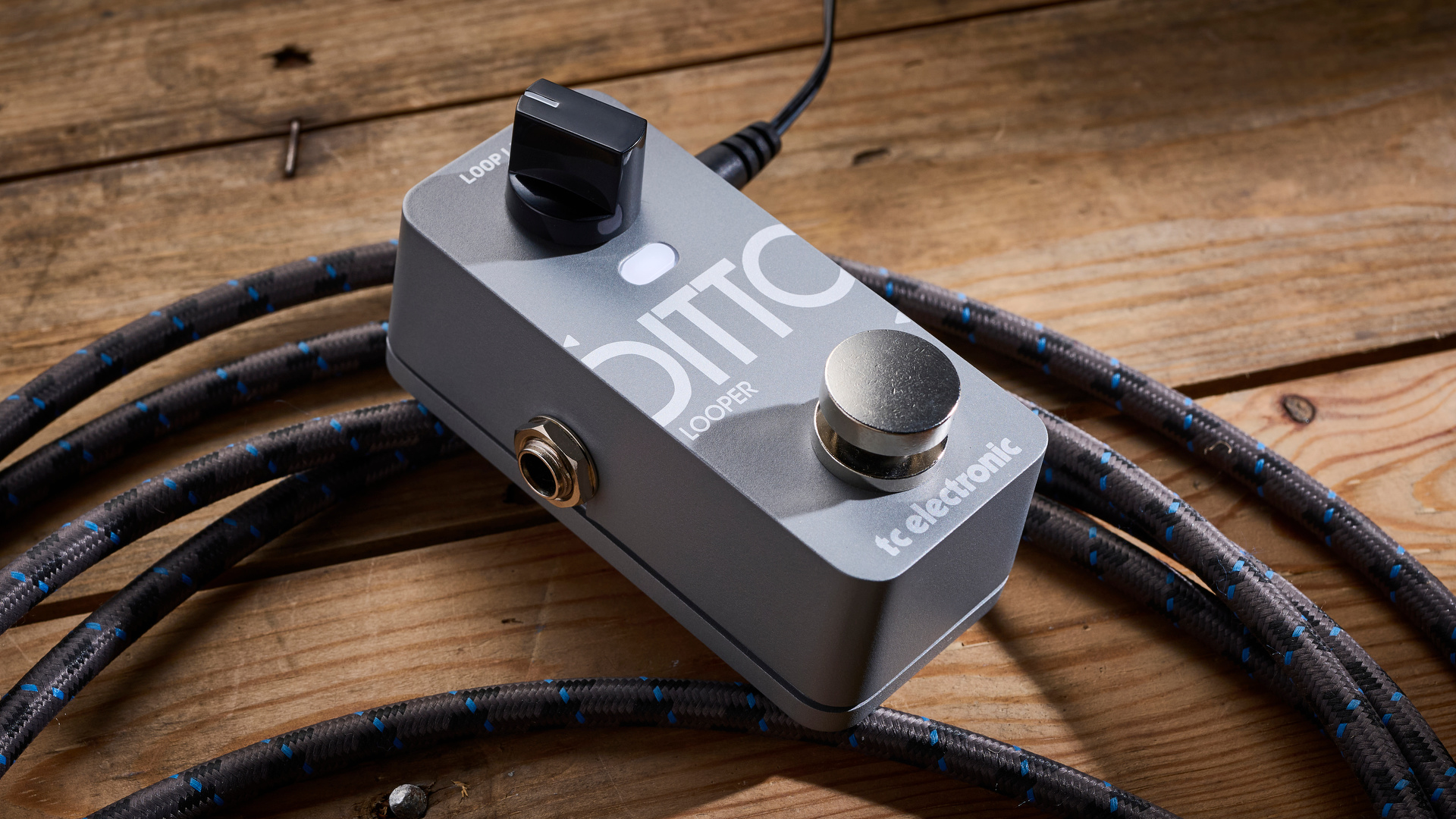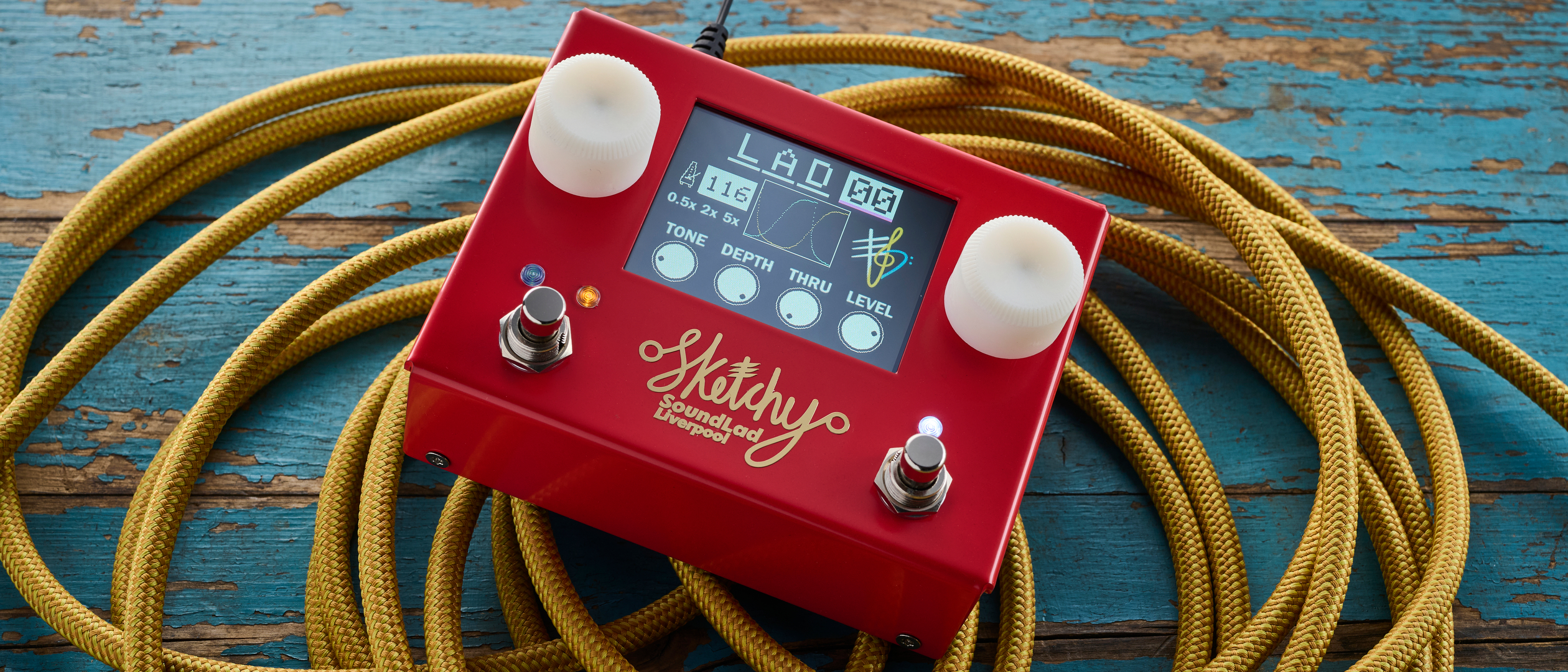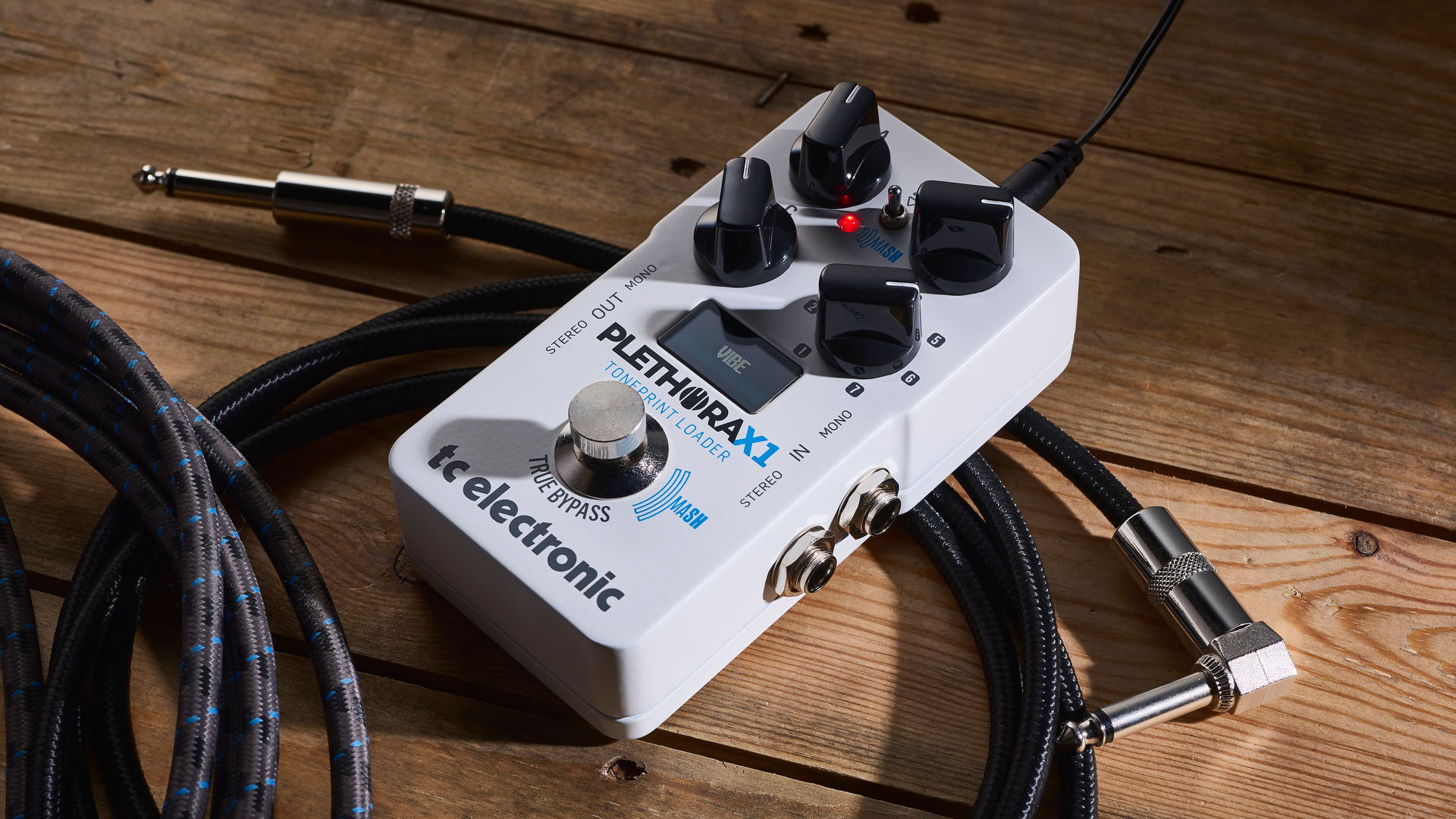MusicRadar Verdict
Roland's new GO:PIANO 88PX is one of the most compact and lightweight 88-key digital pianos on the market. Despite its size, it delivers impressive audio quality and premium functions as well as featuring a good selection of inspired sounds. Yet, its key action may feel awkward for most, making the playing experience challenging for both experienced players and beginners - but it's still worth trying if portability is your priority
Pros
- +
Very light and compact
- +
Full-sized 88-keys (ivory texture)
- +
Inspiring sound collection
- +
Bluetooth and half-damper compatible
Cons
- -
No weighted keys
- -
Awkward key action (minimal action movement)
- -
Best enjoyed in headphones
MusicRadar's got your back
What is it?
The world of ultra-portable digital pianos is an exciting and ever-evolving landscape where piano makers always push the boundaries of what's possible in a super compact instrument. Due to their lightweight and small size, engineers must continually juggle playability, sound quality, extra features, and, above all, portability.
In 2019, Roland introduced the GO:PIANO 88 (GO 88P), its first ultra-compact 88-key digital piano. This lightweight instrument marked a new direction for the Japanese brand, offering a full-length keyboard in a highly portable design. The GO 88P was well-received by beginners and more advanced musicians looking for portability without sacrificing key range.
This year, Roland returns with an enhanced evolution of the GO 88P - the GO 88PX. With this new model, they've taken user feedback to heart, refining the ultra-compact digital piano experience with a fresh new philosophy: a focus on playability, sound realism, and intuitive usability. The result? A brand-new sound engine, a new piano sound, improved speakers, half-damper support, sympathetic resonance modelling, and a host of modern upgrades.
The GO 88PX features a clean, updated design with contours that reflect a classic home digital piano, all within a very compact frame. At just 128 cm by 27.6 cm and weighing only 5.8 kg, lighter than its predecessor, it's easily transportable. It can be powered by 8 AA batteries, providing around 6 hours of playtime, or via the included AC adapter and USB.
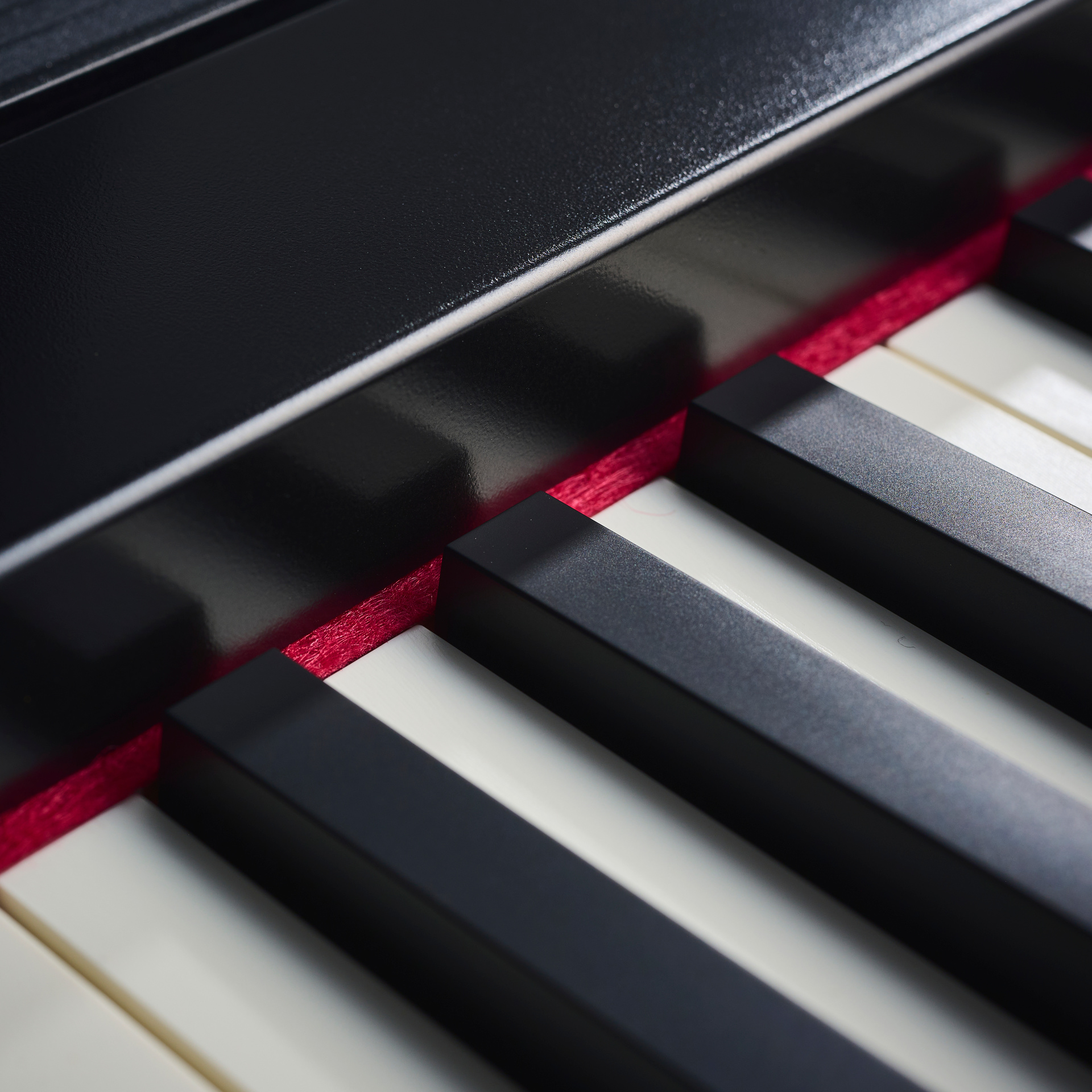
There's not much clutter on this instrument, just a sleek, intuitive control panel with buttons for volume, Bluetooth, and metronome, plus two subtly placed speakers on the top panel, designed to deliver a clean, open sound.
The new GO:PIANO 88 keyboard features 88 touch-sensitive, full-size keys. The ivory-textured key surface enhances grip during extended playing sessions, delivering a more natural feel. The keyboard is velocity-sensitive, but there is no hammer action.
The technology behind the sound of the new GO:PIANO 88 reflects the latest advancements in music innovation. It utilises sympathetic resonance modelling, a lighter technology than VRM found in more premium instruments. It replicates the natural vibration of unstruck strings when nearby notes are played.
The GO 88PX now supports half-damper functionality, allowing for more nuanced expression when using a sustain pedal. Note that the instrument doesn't come with a sustain pedal, but players can connect any pedal that supports the half-damper functionality.
The new GO:PIANO 88 comes with a re-engineered set of speakers, smaller than the previous model, but Roland tells us that the new ones offer "better projection, clarity, and balance." The piano also has more built-in sounds than its predecessor, with 40 already in the box and an additional 256 sounds once connected to the Roland Piano app. It also features a new grand piano sound, which, with the help of Roland's brand-new sound engine, delivers a rich timbre and a deeper tone.
Roland has adapted its piano reality ambience modelling to the GO 88PX, their technology for immersive reverbs and spatial enhancement. It's designed to make the piano sound more natural and immersive. Notably, this new piano has a rotary speaker effect, specially designed for the organ voices.
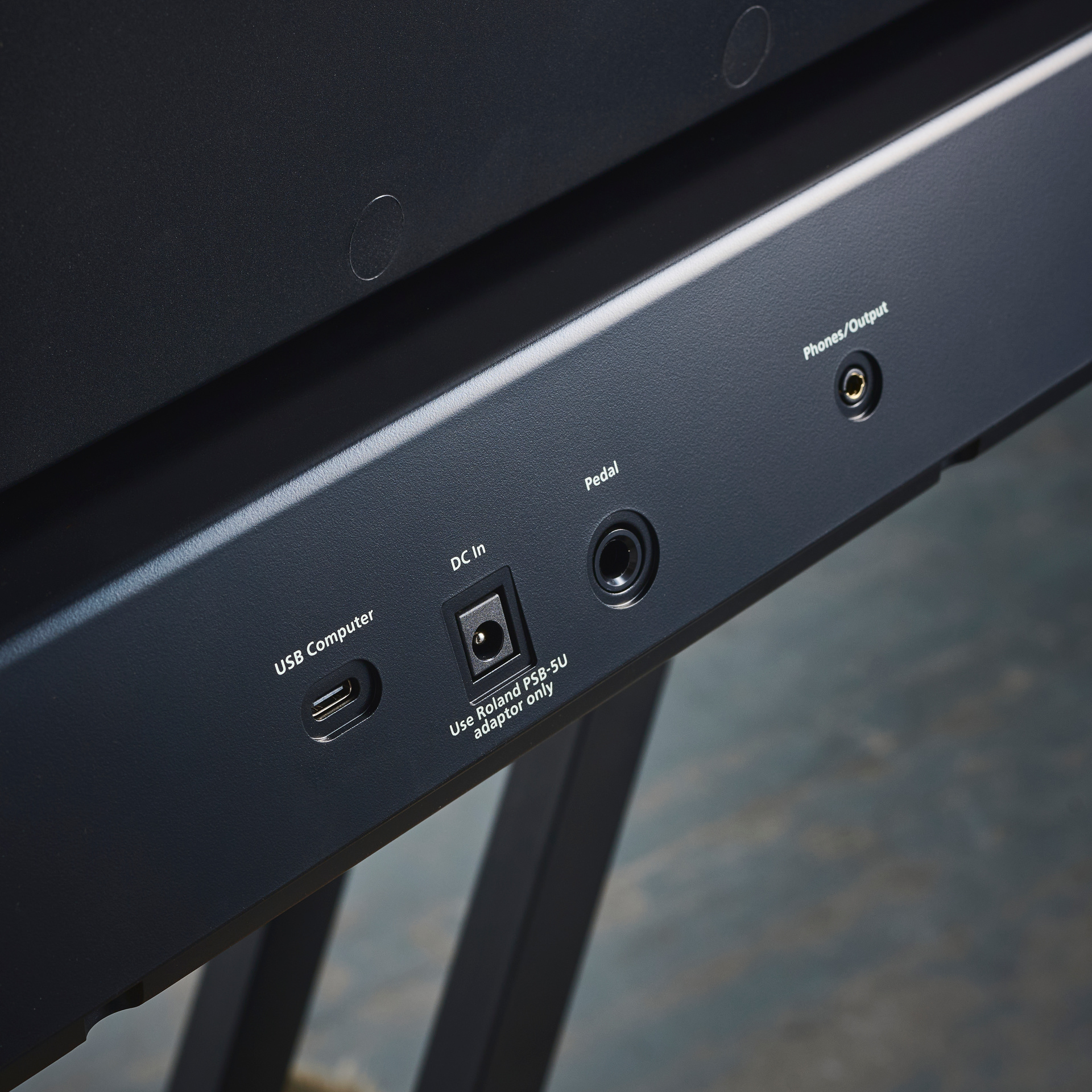
Some may notice that the previous GO:PIANO 88 featured 128-note polyphony, whereas this new model has been reduced to 64 voices. While this could be a concern for some players, it doesn't necessarily impact the instrument's realism. For example, when holding the sustain pedal, a player would need to press more than 64 keys before the earliest notes begin to disappear. It's a trade-off for balancing new technology with the need for a compact and lightweight instrument.
Ultra-compact instruments are not only designed for portability, but they're also make ideal digital pianos for beginners. The new GO:PIANO 88 features useful tools, such as the twin piano function, which splits the keyboard into two identical ranges. This allows both teachers and students to play the same notes simultaneously.
This digital piano comes with the usual functions found in most digital pianos these days; metronome, rhythm pattern, master tuning, transpose function, a split available via the app and a record function.
The GO-88PX features Bluetooth connectivity, allowing seamless integration with the Roland Piano app. This expands the piano experience, offering a range of sheet music as well as interactive, game-based lessons that make learning more engaging and rewarding.
As an extra perk, buying the new Roland GO:PIANO 88 comes with a one-year membership to Roland Cloud Core. This membership offers subscribers access to an extensive library of virtual instruments, sound expansions, creative tools, and 500 digital scores, enhancing the versatility and creativity of the instrument.
Performance & verdict
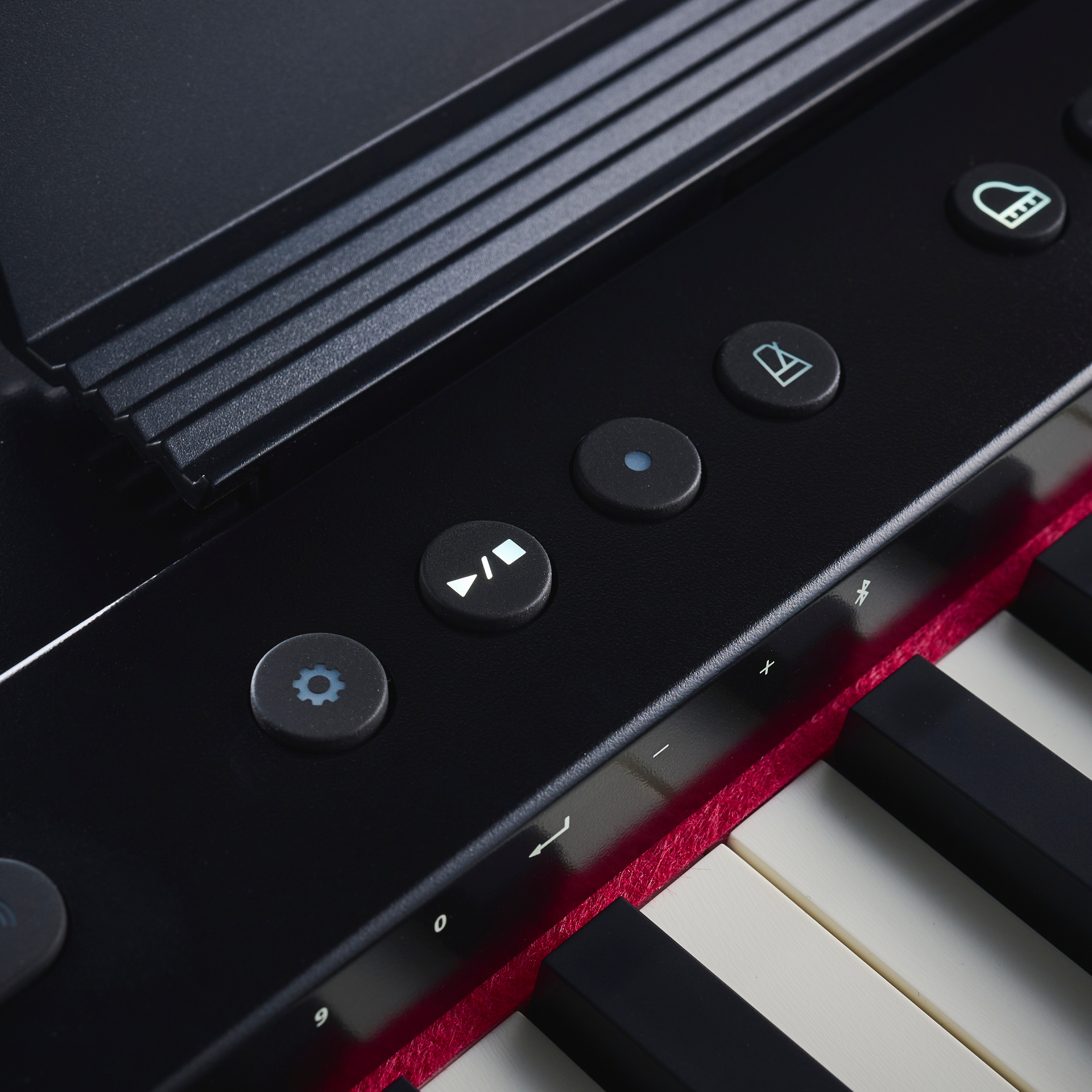
Where the new Roland GO:PIANO 88 falls short is in its key action
When we first received the new Roland GO:PIANO 88 and looked at its specs, we were a bit puzzled as it seemed to be a downgrade from the previous model - but Roland might be on the right track with this new model.
When it comes to being a very lightweight and compact instrument, the new GO:PIANO 88 is certainly impressive and is one of the smallest digital pianos that we've tested. The ability to offer 88 full-sized keys in such a compact design is remarkable, whether you're just starting to play and need to store it away or you're looking for a piano that’s easy to take with you. You can purchase the Roland CB-B88V2 Keyboard Bag to protect your instrument while on the go. Can such a compact design still deliver a great playing experience?
Well, yes and no. Overall, the keys feel remarkably good, with a comfortable ivory texture on the white keys. Where the new Roland GO:PIANO 88 falls short is in its key action. While the keys aren’t weighted, we found them to be quite heavy and somewhat awkward to play, offering minimal action movement and not enough depth. While it worked fine for louder, more energetic passages, we struggled to achieve soft and expressive nuances.
Advanced players may find the experience uncomfortable and, at times, frustrating. At the same time, beginners could struggle with the stiff key action, making it harder to enjoy the progress of learning.
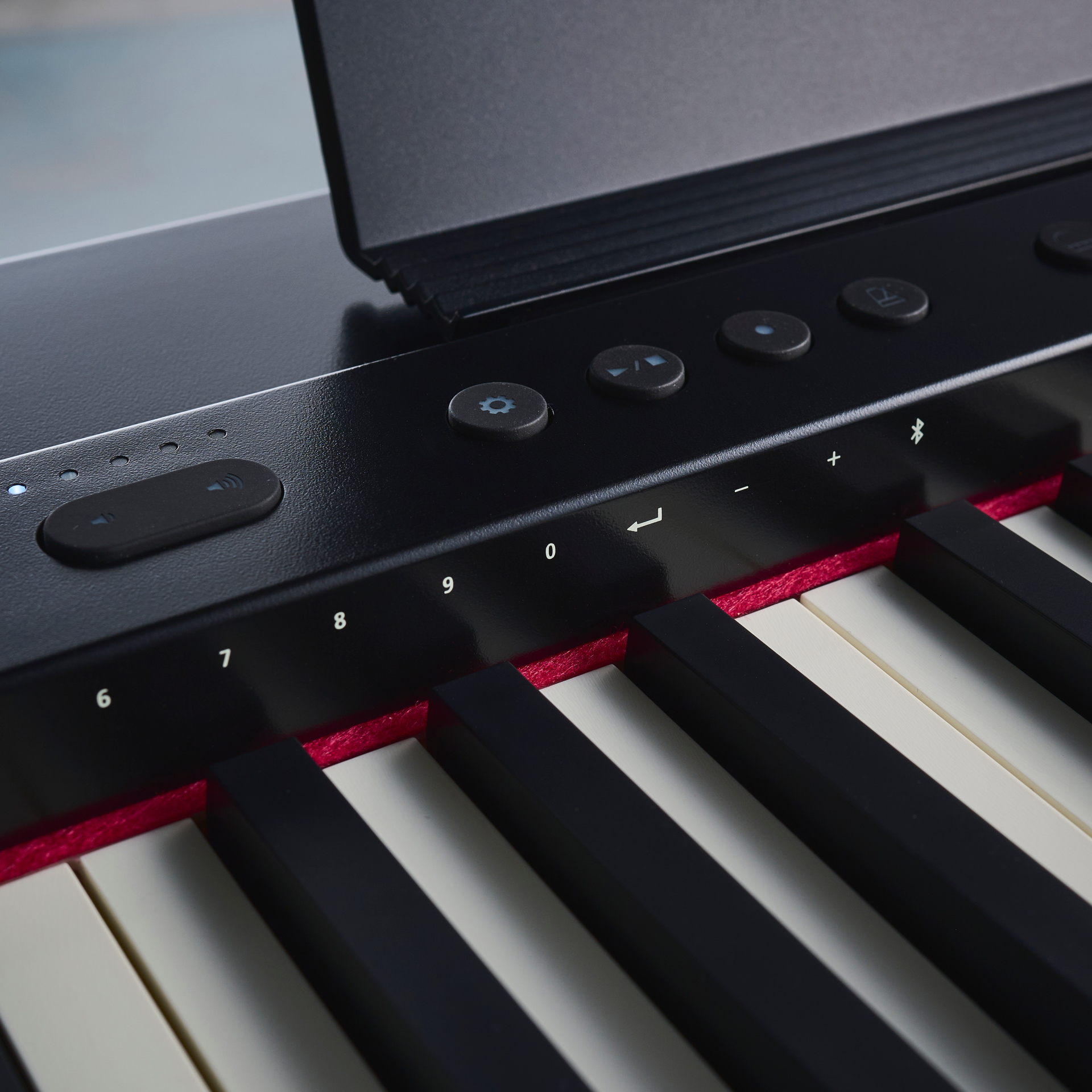
One of the main strengths of the new GO:PIANO model lies in its sound quality and the variety of voices available
It seems Roland prioritised an ultralight, compact design over weighted keys, but does that portability come at the expense of sound quality? Surprisingly, no!
We weren’t expecting much from the speakers, as the smaller the speakers, the less rich and defined the sound tends to be. However, the speakers on the new GO:PIANO 88 are impressive and perform very well, even in larger rooms. While they have a more boxy sound than premium digital pianos, they pack a punch with a relatively clear tone throughout the keyboard. If you plan to bring this keyboard to a rehearsal, we’d still recommend plugging it into a PA system, but it should be loud enough for a small private gig in a friend’s living room.
One of the main strengths of the new GO:PIANO model lies in its sound quality and the variety of voices available. Once we plugged headphones into the instrument, we were happily surprised. The GO 88PX comes with an interesting collection of voices, beautifully sampled. We often find digital pianos lack originality in their sound selection - not, the new GO:PIANO 88!
It comes with 40 unique and inspiring sounds to choose from. Some are more classic ones, like harpsichords, church organs, and strings, while others are more unconventional, such as a lo-fi piano and an electric piano with the fluttering, crackling sound of an old record player. We particularly liked those two!
The simplicity of the new GO:PIANO 88 shouldn't be overlooked, and we found it quite intuitive to navigate through the different voices and settings. It also seamlessly connects to the Roland Piano app, which expands the instrument's possibilities.
Overall, the new GO:PIANO 88 brings much-needed innovation to the ultra-compact piano experience, and experienced players will appreciate the half-damper function.
Final verdict

The new Roland GO:PIANO 88PX may seem like a step down from its predecessor when reading the spec sheet, but in reality, it introduces fresh and exciting new features to the ultra-compact digital piano market. If you can look past the key action and want an ultra-lightweight 88-key piano with vibrant sounds and impressive audio - especially through headphones - this one’s worth considering.
However, packing solid sound quality into such a compact frame comes with trade-offs, and playability is important and shouldn't be underestimated. Experienced players will most likely find the keyboard awkward and miss the ability to comfortably play soft dynamics, while beginners will most likely struggle to get a grip on the keyboard and fully enjoy the experience.
So, if you're considering getting the new Roland GO:PIANO 88PX, we recommend trying it first; see if the keyboard feels it fits your playing style before committing.
Hands-on demos
Specifications
- Keys: 88 full-size Ivory Feel, Box-Shaped Keys
- Polyphony: Max 64 voices
- Tones: 10 Pianos, 10 Electric Pianos, 10 Organs, 10 Other Instruments (including a drum set)
- GM2 Sounds: 256 tones (adjustable only via Roland Piano App)
- Effects: 5 types (adjustable from 0–10)
- Transpose: -6 to +5 (in semitones)
- Touch Sensitivity: 5 levels + fixed touch
- Speakers: 2 x 12 x 6 cm
- Power: 6W x 2
- Bluetooth: Version 5.0
- Connectors: DC In, Pedal Jack (supports half-damper with DP-10 pedal), USB Type-C (for Audio & MIDI, Class Compliant), Headphones/Output Jack (stereo mini jack)
- Internal Songs: 10
- Battery: 8x AA Alkaline or Ni-MH batteries
- Battery Life: Ni-MH (1,900 mAh): ~7 hours, Alkaline: ~6 hours
- Power Consumption: 400 mA (when using an AC adapter)
- Dimensions: Width: 1,280 mm (50-7/16 inches), Depth: 276 mm (10-7/8 inches), Height: 84 mm (3-5/16 inches)
- Weight: 5.8 kg (12 lbs 13 oz)
- Contact: Roland
Quentin is a composer specialising in writing for contemporary dance, theatre and film. He is also a classically trained pianist and multi-instrumentalist. One half of trip-hop duo Moon Thrills, Quentin also teaches songwriting to the undergraduate students at LCCM in London. He has a newly discovered passion for sound synthesis and finds it a great way to explore new and exciting ways to develop his music.
You must confirm your public display name before commenting
Please logout and then login again, you will then be prompted to enter your display name.
MusicRadar deals of the week: Enjoy a mind-blowing $600 off a full-fat Gibson Les Paul, £500 off Kirk Hammett's Epiphone Greeny, and so much more
“For those who think they know Joel’s story, as well as those who are not as familiar, I believe this two-part film is both a revelation and a surprise”: New Billy Joel doc is on the way
